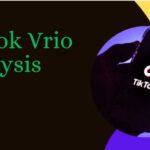Sainsbury’s, one of the largest supermarket chains in the UK, has established itself as a key player in the highly competitive retail grocery sector. Conducting a VRIO analysis of Sainsbury’s allows for a comprehensive examination of its resources and capabilities to determine how they contribute to its competitive advantage. By evaluating the value, rarity, inimitability, and organization of its assets, we can gain insights into how Sainsbury’s effectively navigates market challenges, capitalizes on growth opportunities, and differentiates itself from rivals. This analysis will explore critical factors such as brand loyalty, supply chain efficiencies, product diversity, and customer service initiatives, highlighting how these elements support Sainsbury’s strategic objectives and long-term sustainability in the retail landscape.
Table of Contents
ToggleValue Analysis of Sainsbury
In the context of Sainsbury’s VRIO analysis, the “Value” component assesses whether the supermarket’s resources and capabilities enable it to create a competitive advantage by addressing customer needs and market demands. Key valuable attributes of Sainsbury’s include:
- Strong Brand Reputation: Sainsbury’s is known for quality products and a commitment to customer service, which fosters customer loyalty and enhances its market position.
- Diverse Product Range: The supermarket offers a wide variety of products, including grocery items, clothing, and household goods, catering to diverse consumer preferences and increasing customer footfall.
- Sustainability Initiatives: Sainsbury’s commitment to sustainability and ethical sourcing resonates with increasingly conscious consumers, positioning it favorably in a market that values corporate social responsibility.
- Innovative Technology: Investments in digital platforms and technology, such as online shopping and efficient supply chain management, enhance the customer experience and improve operational efficiency.
These valuable resources allow Sainsbury’s to meet customer expectations effectively, differentiate itself from competitors, and maintain a strong presence in the competitive grocery retail market.
Rarity Analysis of Sainsbury
In the VRIO framework, the “Rare” component evaluates whether Sainsbury’s possesses unique resources or capabilities that set it apart from competitors in the grocery retail sector. Key rare attributes of Sainsbury’s include:
- Established Brand Heritage: Founded in 1869, Sainsbury’s has a long-standing presence and reputation in the UK market, which few competitors can replicate, fostering deep customer loyalty.
- Exclusive Product Lines: Sainsbury’s offers exclusive brands, such as “Taste the Difference,” which provide customers with unique, high-quality options not available at other retailers, differentiating it in the market.
- Loyalty Programs: The Nectar loyalty program is one of the UK’s most recognized schemes, offering personalized rewards that enhance customer retention and create a competitive advantage.
- Strong Community Engagement: Sainsbury’s active involvement in community initiatives and local sourcing distinguishes it from many competitors, appealing to socially conscious consumers.
These rare resources and capabilities help Sainsbury’s maintain a distinctive market position, allowing it to attract and retain customers in a highly competitive environment.
Imitability Analysis of Sainsbury
In the VRIO framework, the “Inimitability” component assesses whether Sainsbury’s resources and capabilities can be easily replicated by competitors. Several factors contribute to the inimitability of Sainsbury’s strengths:
- Brand Loyalty and Reputation: The deep-rooted brand loyalty Sainsbury’s has cultivated over many years is difficult for competitors to replicate. Trust and emotional connections built over time are hard to forge quickly.
- Exclusive Product Lines: While competitors may attempt to create similar products, the specific branding and quality associated with Sainsbury’s exclusive lines, like “Taste the Difference,” require significant investment in marketing and quality assurance, making them challenging to imitate.
- Established Supplier Relationships: Sainsbury’s long-standing partnerships with suppliers, particularly those focused on ethical sourcing and sustainability, provide it with unique product offerings and pricing advantages that competitors may find difficult to establish.
- Cultural and Operational Practices: The company’s commitment to community engagement and sustainability is embedded in its corporate culture, which cannot be easily replicated by competitors without a genuine commitment and history in these areas.
These inimitable aspects create a strong competitive advantage for Sainsbury’s, allowing it to differentiate itself in the grocery retail market and maintain its position against competitors.
Organizational Analysis of Sainsbury
In the VRIO framework, the “Organization” component evaluates Sainsbury’s ability to effectively leverage its resources and capabilities to achieve strategic objectives and maintain a competitive advantage. Key organizational factors that contribute to Sainsbury’s success include:
- Leadership and Strategic Vision: Sainsbury’s strong leadership fosters a clear strategic vision, guiding the company in adapting to market changes, pursuing growth opportunities, and enhancing operational efficiencies.
- Efficient Supply Chain Management: The company has developed a robust supply chain that ensures product availability and freshness, allowing it to respond quickly to consumer demands and optimize inventory management.
- Employee Engagement and Training: Sainsbury’s commitment to employee development, including training programs and a focus on customer service, empowers staff to deliver high-quality experiences, driving customer satisfaction and loyalty.
- Technology Integration: The integration of technology in operations, such as online shopping platforms and data analytics for inventory and customer preferences, enhances efficiency and improves the overall customer experience.
By effectively organizing these resources and capabilities, Sainsbury’s can maximize their value, adapt to competitive pressures, and sustain its position as a leading player in the grocery retail market.
Conclusion :
In conclusion, the VRIO analysis of Sainsbury’s reveals a well-structured organization that effectively leverages its unique resources and capabilities to maintain a competitive edge in the grocery retail sector. The supermarket’s strong brand reputation, diverse product offerings, and commitment to sustainability create significant value for customers. Its rare assets, such as exclusive product lines and established supplier relationships, further differentiate it from competitors. Additionally, the inimitable aspects of its brand loyalty and cultural practices reinforce Sainsbury’s position in the market.
Company’s strategic leadership, efficient supply chain management, and technology integration enable it to optimize its operations and adapt to changing consumer needs. Together, these factors position Sainsbury’s for continued success and resilience in a dynamic retail landscape.


